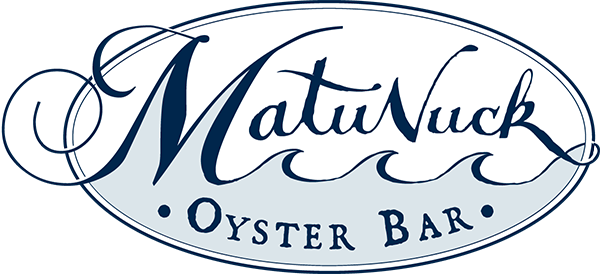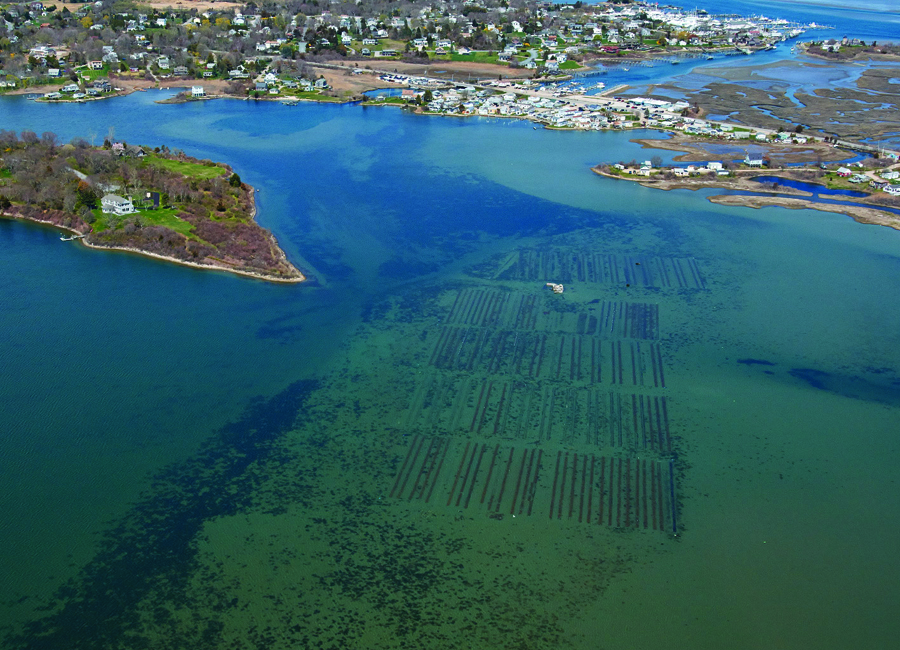Aquaculture tour elevates the oyster By Paul E. Kandarian, Globe Correspondent | Oct 14, 2011 03:26 PM
SOUTH KINGSTOWN – When touring the aquaculture shellfish farm behind the Matunuck Oyster Bar restaurant, you not only learn about where your food comes from, but you also walk through its breeding grounds here on the southern coast – and if you’re lucky, you harvest a few oysters to eat later.
Or sooner.
On a tour led by Perry Raso, 32, owner of those two enterprises, he showed a dozen or so adventurous customers who had slogged to the aquaculture site in nearby saltwater Potter Pond the spot where he also grows gracilaria, a tannish, tasty seaweed served in his restaurant. He raised a netted container used to grow the seaweed, and invited us to have a bite.
“Go on,’’ Raso said. “Give it a try.’’
Some did, some didn’t. Personally, I couldn’t get enough of the crunchy, salty seaweed.
The tour had started on the restaurant patio (both the tours and the restaurant are year-round), where participants gathered to listen to Raso talk about the ecological importance of estuaries and barrier beaches, the different taste of various Rhode Island oysters, and how those harvested in fall tend to be sweeter, since they produce more glycogen when the temperature drops. He talked about the environment, using charts, photographs, oysters, and passion to drive his points home.
“It’s all connected, all the waterways, what we do in one affects the other,’’ he said. “Shellfish are filter feeders, they take in water, clean it, and put it out again.’’
Aquaculture, Raso said, “is the fastest-growing food-producing trade in the country.’’ He uses about 30 percent of what he grows in Potter Pond at his restaurant, and also sells to retailers, in addition to buying oysters from some of the other 35 or so aquaculture businesses in the state.
After about a half hour of technical talk, the group walked down Succotash Road and through occasionally hip-high water to the farming site, about a 15-minute trek. Raso stopped along the way to explain various landmarks before getting to his farm buried beneath the water. There was a barge in the middle, where workers sorted grown oysters into bags.
In the middle of this pond where he cultivates some 16 million oysters in the deliciously briny water, Raso, as impassioned about the environment as he is about his business, explained how shellfish farming works.
All around us, Raso said, were 10,000 mesh bags made of heavy plastic, in which tiny oysters he buys from hatcheries are placed, and in two to three years, grow from 2 liters in bulk to 30 liters. As we walked, he advised us to follow him closely on the path he knows well, so as not to trip over the bags at our feet.
As Raso talked, a few of us dug into the muck with our toes, finding a random oyster here and there, pocketing them to take back to the restaurant to eat later. What you find growing outside the bags, you can have, he said, and restaurant workers will shuck them for you. This day, I found about five fat ones, but three turned out to be duds, the shells filled with mud and a dead oyster. Such are the chances you take in the watery wild.
The tour, which lasts roughly 90 minutes, depending on how many questions Raso is peppered with, ends back at the restaurant, where most tour members usually have lunch, chowing down on what they found or from the expansive seafood menu.
The three-sided wood raw bar, where workers on busy days are in constant shucking motion, has a depiction of Narragansett Bay carved into it, with spots marked where various oysters are harvested.
Raso, a native New Yorker, came to Rhode Island as a boy, when his father, a retired police officer, decided to try life as a fisherman. His father went back to policing, but Raso had the bug by then, an eager 12-year-old diving and digging for clams to sell.
“I was making $40 to $50 a day, pretty good money at the time,’’ he said. “I did that wondering what I’d do when I grew up.’’
He attended college in Connecticut and Colorado, ending up at the University of Rhode Island, where he earned a degree in aquaculture and life sciences. He started shellfish farming in 2002 and opened his restaurant in 2009.
“I did that against the advice of a lot of people,’’ Raso said as we slurped Moonstone, Matunuck, and Cuttyhunk oysters, each decidedly different in taste. “It wasn’t a good economy then.’’
The business took off and has been one of the busiest in the area. This year, Raso won the Tourism Works for Rhode Island Award from the South County Tourism Council.
When the weather turns colder, tour members are provided with heavy waders. If it’s too cold, but enough people want to take the tour, they can be shuttled to the site by boat, Raso said. And most of the time, he does not make them pay.
“Usually they come back and have lunch, so I’m not going to charge them for the tour,’’ he said.
Maria Vidas and Bernie Langer, college professors from New Jersey and oyster lovers, have vacationed in the area for a few years, after a friend told them how good Rhode Island oysters are. They discovered Matunuck Oyster Bar, and come daily for lunch.
“They have the most exquisite oysters here,’’ said Langer, as the two were about to take the tour, talking about the shellfish like an oenophile talks about cabernet. “We’ve developed a taste for these oysters. They’re incredible.’’


